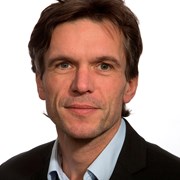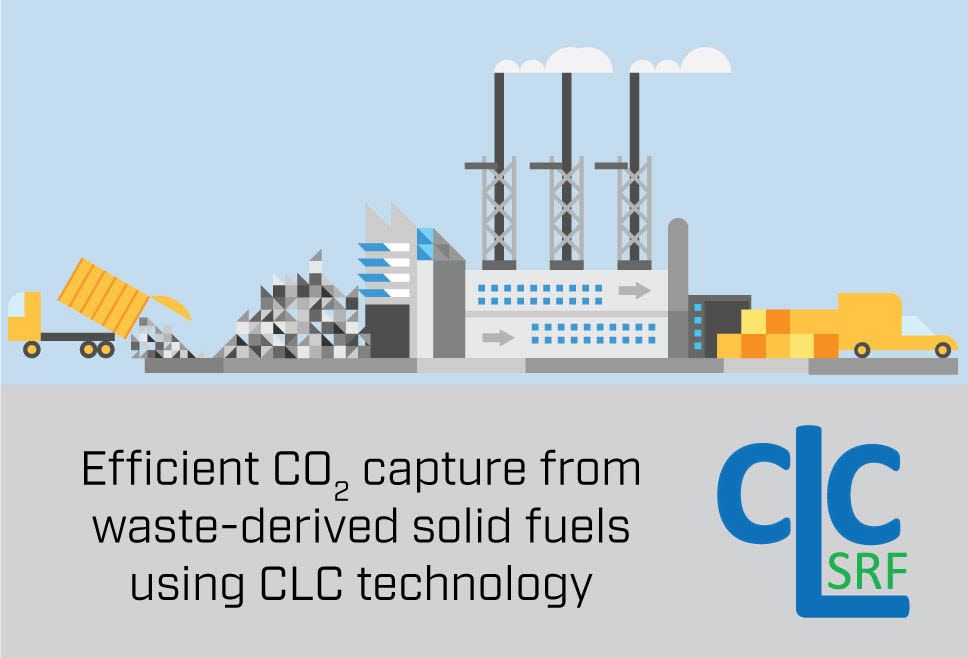Since about half of this waste is biogenic, it will also contribute to negative CO2 emissions ("climate-positive" solution).
Conventional fluidized-bed combustion for conversion of waste-derived fuels is commercial technology which has been utilized for many years. The purpose of this project is to take it further to a fluidized bed CLC (Chemical Looping Combustion) process. Waste conversion in CLC has not been demonstrated so far and represents a possible new solution for CO2 capture with potentially high capture efficiency and low energy losses.
The main objective of the project is to evaluate the feasibility and potential benefits of converting solid waste-derived fuels in a Chemical Looping Combustion (CLC) process, providing a concentrated stream of CO2 that is ready for transport and permanent storage.
Result:
Øyvind Langørgen, Inge Saanum, Roger Khalil, Nils Erland L. Haugen. Evaluation of CLC as a BECCS technology from tests on woody biomass in an auto-thermal 150-kW pilot unit. International Journal of Greenhouse Gas Control 130 (2023) 104006
The project contains the following main activities:
- Testing CLC with waste-derived fuel in the 150 kW CLC pilot unit of SINTEF Energy Research, using oxygen-carrier materials based on cheap minerals.
- Evaluate possible re-use, or alternative use, of spent oxygen carrier materials.
- Perform a techno-economic study and LCA for a possible plant, and becnhmark with other technologies.
What has the project achieved? Did the project achieve its objective?
The pilot tests showed that conversion of waste-derived fuel in a CLC process, with cheap natural minerals (ilmenite and manganese oxide) as oxygen carrier materials, is feasible. Operation was stable and the results very promising, even slightly better than what was achieved with biomass, a reference fuel much more tested in CLC. The results showed that a CO2 capture rate of more than 95 % can be achieved.
Spent oxygen carrier material from CLC was not so beneficial for use in the titanium dioxide production process. It was more difficult to process the spent material to titanium dioxide than from fresh unused ilmenite. However, the titanium dioxide process produces a waste material stream. This was tested in lab-scale and can in fact be a possible material to be used as oxygen carrier in CLC.
The techno-economic assessment showed that the CLC plant had better efficiency and lower CO2 avoidance cost than the reference plants evaluated in the study (with post-combustion calcium looping and amine, and same plant capacity). The LCA study showed that the CLC-plant had better score than the reference plants on the indicator “climate change”.
The main objective has been achieved and it is shown that waste-derived fuels can be converted with CLC technology and provide efficient CO2 capture. The “CLC-SRF” project has been a feasibility study with limited extent. The work is now taken further in a new project as described below. This will bring more detailed results and evaluations, and further contribute to assurance of the promising results from the “CLC-SRF” results.
- CLC of waste-derived fuel and biomass in a 150-kW pilot unit
6thInternational Conference on Chemical Looping, Zaragoza, Spain, September 19-22, 2022
Future plans
This project (feasibility study) represents the first stage to develop CLC as a possible conversion and capture-technology for waste-derived fuels. As a second stage, it was applied for a project to the ACT3 call. This was granted and the work is now being carried out in the project “LOUISE”. This project includes more countries (Germany, Norway, Turkey, and Greece) and more partners, including one large plant manufacturer. It is planned pilot tests up to 1 MW scale. The project will also prepare for demonstration at 10 – 30 MW scale by establishing the design for such a plant. This is an industrially relevant scale and is planned as a stage three I the development towards a commercial technology.

